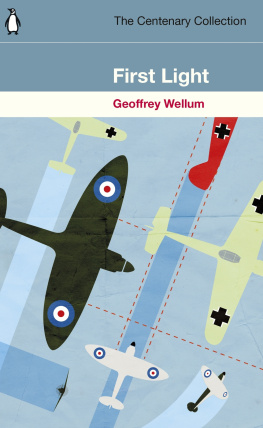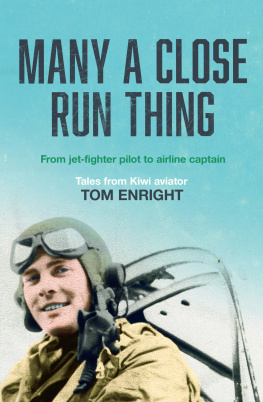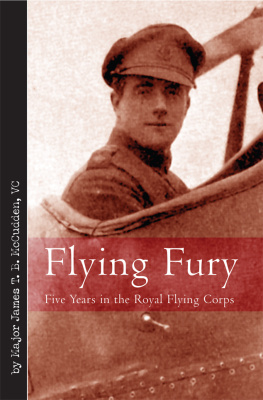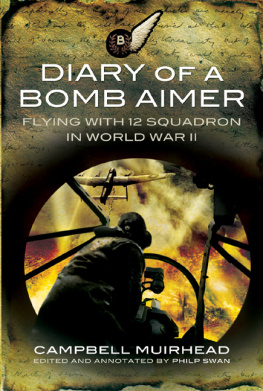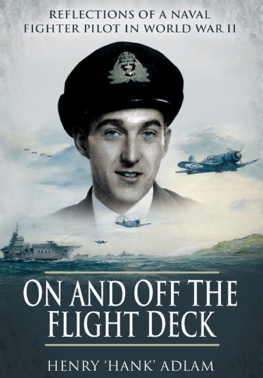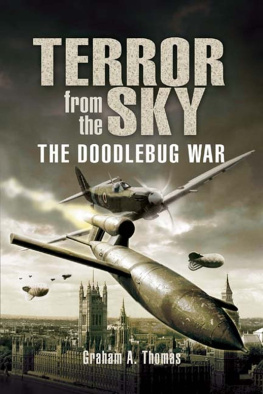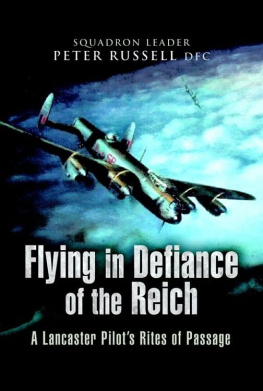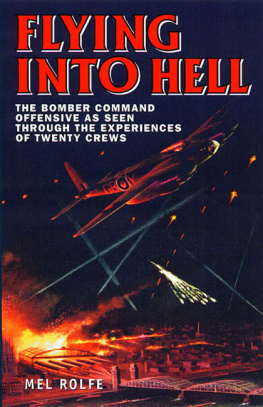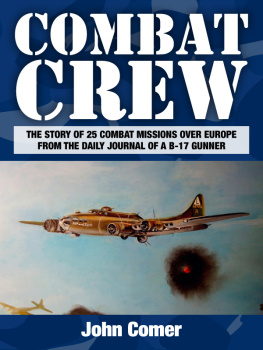The
Hostile
Sky
The
Hostile
Sky
A Hellcat Flier in
World War II
James W. Vernon
Naval Institute Press
Annapolis, Maryland
This title was converted into paperback and eBook editions by a gift in memory of CDR Jacob F. Dolbow III (USNR-Ret.)
Naval Institute Press
291 Wood Road
Annapolis, MD 21402
2003 by James W. Vernon
All rights reserved. No part of this book may be reproduced or utilized in any form or by any means, electronic or mechanical, including photocopying and recording, or by any information storage and retrieval system, without permission in writing from the publisher.
First Naval Institute Press paperback edition published 2013
ISBN 978-1-61251-316-4 (eBook)
The Library of Congress has cataloged the hardcover edition as follows:
Vernon, James W., 1922
The hostile sky : a hellcat flier in World War II / James W. Vernon A.
p. cm.
1. Vernon, James W., 1922 2. World War, 1939-1945Personal narratives, American. 3. Fighter pilotsUnited StatesBiography. 4. Hellcat (Fighter planes) 5. World War, 1939-1945CampaignsPacific Ocean. I. Title.
D8II .V363 2002
940.54 4973092
2002005546

 Print editions meet the requirements of ANSI/NISO z39.48-1992
Print editions meet the requirements of ANSI/NISO z39.48-1992
(Permanence of Paper).
9 8 7 6 5 4 3 2 1
To my wife, Doris Marshall Vernon
Contents
W e were the generation that went off to war, leaving behind worried and fearful parents, siblings, wives, sweethearts, and friends. As the war continued, worry and fear, with increasing frequency, changed to grief. We were forced to maturity by military discipline and responsibilities. We could not linger in adolescence, gradually preparing ourselves for life in a peaceful society. I was thrown together with many young men of about my age. Together we learned about flying and fighting an air war, and ultimately we were shipped halfway around the world to meet the enemy. Never before had America extended its reach on such an immense scale. The experience bound us together as a unique generation.
This story is about my effort to do what was expected of me and my reactions to military life during wartimeboth the routine and the exceptional. I did nothing heroic, but I did what was required and had the luck to survive. I have attempted to tell my story in the voice of a young man, with the accuracy that memory allows. In places I have changed names to preserve the privacy of flying mates.
Anecdotes from this book have been printed in the U.S. Naval Institutes Proceedings. I thank them for permitting me to include them here. I gratefully acknowledge the criticisms and help from members of the Ventura County Writers Club, without which I would never have completed this book. My special thanks go to Claire Robey for her in-depth criticism and encouragement.
The
Hostile
Sky
I n early May 1945 the aircraft carrier USS Ticonderoga (CV14), the Big T, stood out to sea off Pearl Harbor and shaped a course to the war zone in the western Pacific. I was aboard as a fighter pilot in Air Group 87. After a short stop at Ulithi atoll in the western Caroline Islands, to join Task Force 38.4, we transited to Okinawa, where many of us first tasted combat. When Okinawa had been secured we moved offshore from the Japanese home islands, where we remained, making frequent strikes against airfields and anything that moved. After the atomic bombs were dropped and the surrender signed, we entered Tokyo Bay. Nothing in the two years of training had prepared me for the realities of war, the terror of brushes with disaster, the fatigue and boredom of flying over the endless ocean, and the deaths of flying mates.
Back in the spring and summer of 1942 the course of the war in the Pacific had shifted in our favor when our carrier task forces smashed the Japanese fleet at Midway; the heroes had been naval aviators in a war at sea in which aircraft carriers and their planes had replaced battleships as the main striking force. The Philippines, Singapore, Hong Kong, and the Netherlands East Indies had fallen to the Japanese, but our side was holding its own in New Guinea and winning the battle for Guadalcanal in the Solomon Islands.
At my age, nineteen, military service had been inevitable. I felt no impatience that it might all be over before I got into action. Just take things as they come, I told myself, and cover your backside. I had just completed two years of engineering at the Montana School of Mines, and I wanted a break from school, to do something different and stimulating. Military flying intrigued me. Although before the war I had had only a distant interest in flying, I decided that, since I had to enter the service, I should get involved in the rapidly evolving field of naval aviation.
Aviators, it seemed to me, had attained a status like locomotive engineers, stagecoach drivers, steamboat pilots, and ships captains before them. They had captured the publics admiration because they had the power to push to the ends of the land and sea. A locomotive engineer in his high-crowned, striped cap leaning from his lofty window while controlling the raw power of whirling wheels and thrashing driveshafts with one hand, had awed me when I was a child. But now the roar of engines, the flash of propellers and silver wings overhead captured my imagination, as the aviator, unseen but potent, swiftly soared above and beyond the horizon. I sometimes wondered whether I dared to aspire to join their exclusive cult and whether they would let me in. But deep down I knew they were mere mennot much different from me. I was stimulated by the challenge and attracted to the drama of war in the air.
My decision to enter pilot training was mainly cerebral, colored by escapism, a sense of adventure, and yes, patriotism. I had never been in an airplane or even touched one on the ground. In the 30s I had visited a small airport in my hometown of Fargo, North Dakota, and seen a Ford Trimotor with its peculiar corrugated exterior, and I had walked in the shadow of its wings. Id seen planes in flight, like the Douglas DC-2, which had a flight schedule through Fargo. I remember being with a group of boys on a country road near Fargo when one those planes flew over. Give me a ride! we screamed, like desperate castaways.
I hadnt read aviation fiction and Im certain I never saw Dawn Patrol or any other movies about air combat in France during World War I. Model airplanes held no interest for me. During high school I had not considered joining the aeronautical program the school offered. Although I had become keenly interested in the air war being fought over Western Europe, it hadnt seemed relevant to me personally until Pearl Harbor.
In the summer of 1942 I enlisted in the Naval Aviation Cadet program and discovered that within the past few months the academic requirement for the program had been lowered from two years of college to high school graduation. That meant many of my fellow cadets would be fresh out of high school and a year or two younger than I. The full significance of this change wouldnt strike me until I went on active duty.
Next page

